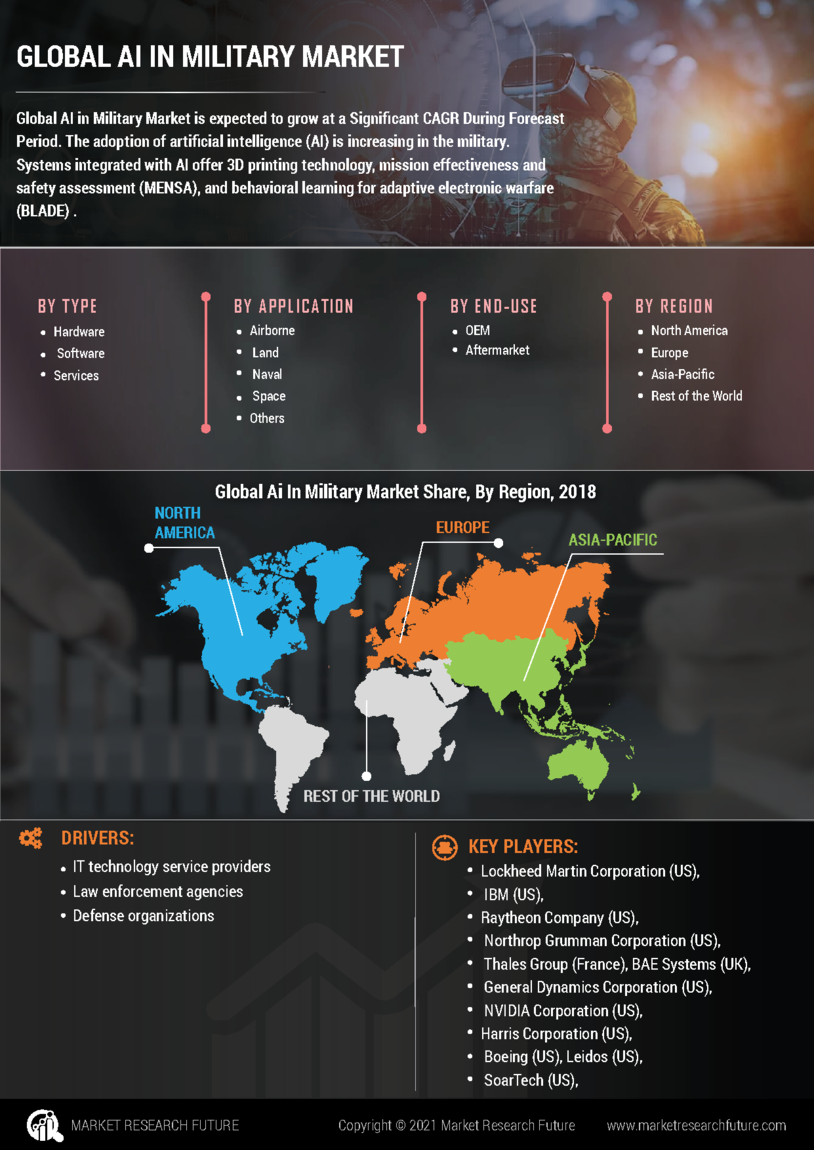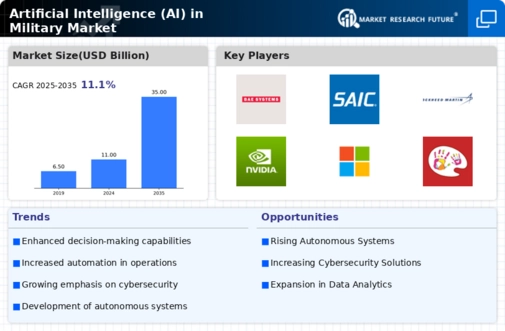The competitive landscape of the Global Artificial Intelligence in Military Market is marked by rapid advancements and significant investments aimed at enhancing national security and defense capabilities.
The integration of AI technologies into military operations is transforming traditional defense strategies, with an increasing focus on autonomous systems, data analytics, and advanced decision-making processes.
As governments and defense organizations explore the potential of AI, key players are emerging with innovative solutions tailored to military needs, leading to a dynamic and evolving competitive environment.
Companies within this sector are heavily invested in research and development to ensure they stay ahead of technological advancements and adapt to changing military requirements, while also navigating the complexities of cybersecurity, ethical considerations, and regulations affecting defense technology.
BAE Systems holds a strong position in the Global Artificial Intelligence in Military Market, leveraging its extensive experience in defense and security solutions. The company has effectively integrated AI capabilities to enhance its offerings, which range from advanced sensor systems to autonomous platforms.
BAE Systems has established itself as a leader by focusing on smart decision support, predictive maintenance, and improved situational awareness in military operations. Its strengths lie in a robust portfolio of products designed to meet the demands of modern warfare, along with solid relationships with military forces globally.
The company’s notable emphasis on innovation and collaboration with technology partners enables it to remain competitive and adapt to emerging trends in the artificial intelligence domain. This strategic focus positions BAE Systems favorably in the evolving landscape of military applications of AI.
SAIC is another prominent player in the Global Artificial Intelligence in Military Market, recognized for its comprehensive suite of solutions aimed at enhancing defense capabilities through advanced technologies.
The company has developed key products and services that include AI-driven data analysis, combat simulation systems, and cybersecurity solutions, thereby improving operational readiness and mission success for armed forces across the globe.
SAIC benefits from a well-established market presence and a reputation for delivering quality results, which is bolstered by strategic mergers and acquisitions that expand its technology capabilities. The company’s commitment to innovation and its ability to respond to the evolving needs of clients further enhance its competitive edge.
With a deep understanding of defense requirements and strong technical expertise, SAIC continues to strengthen its role in the military sector, pushing the boundaries of what AI can achieve in defense and security operations.























Leave a Comment